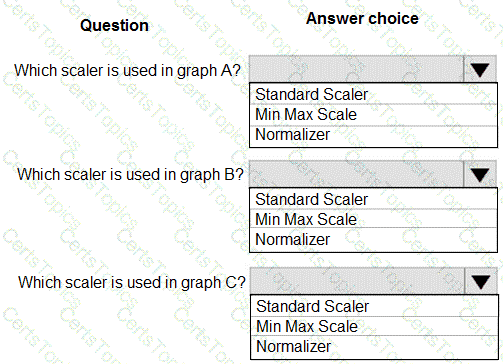You create an Azure Machine Learning pipeline named pipeline1 with two steps that contain Python scripts. Data processed by the first step is passed to the second step.
You must update the content of the downstream data source of pipeline1 and run the pipeline again
You need to ensure the new run of pipeline1 fully processes the updated content.
Solution: Set the allow_reuse parameter of the PythonScriptStep object of both steps to False
Does the solution meet the goal?
You are a lead data scientist for a project that tracks the health and migration of birds. You create a multi-class image classification deep learning model that uses a set of labeled bird photographs collected by experts.
You have 100,000 photographs of birds. All photographs use the JPG format and are stored in an Azure blob container in an Azure subscription.
You need to access the bird photograph files in the Azure blob container from the Azure Machine Learning service workspace that will be used for deep learning model training. You must minimize data movement.
What should you do?
You are performing feature scaling by using the scikit-learn Python library for x.1 x2, and x3 features.
Original and scaled data is shown in the following image.

Use the drop-down menus to select the answer choice that answers each question based on the information presented in the graphic.
NOTE: Each correct selection is worth one point.

You are analyzing a dataset containing historical data from a local taxi company. You arc developing a regression a regression model.
You must predict the fare of a taxi trip.
You need to select performance metrics to correctly evaluate the- regression model.
Which two metrics can you use? Each correct answer presents a complete solution.
NOTE: Each correct selection is worth one point.